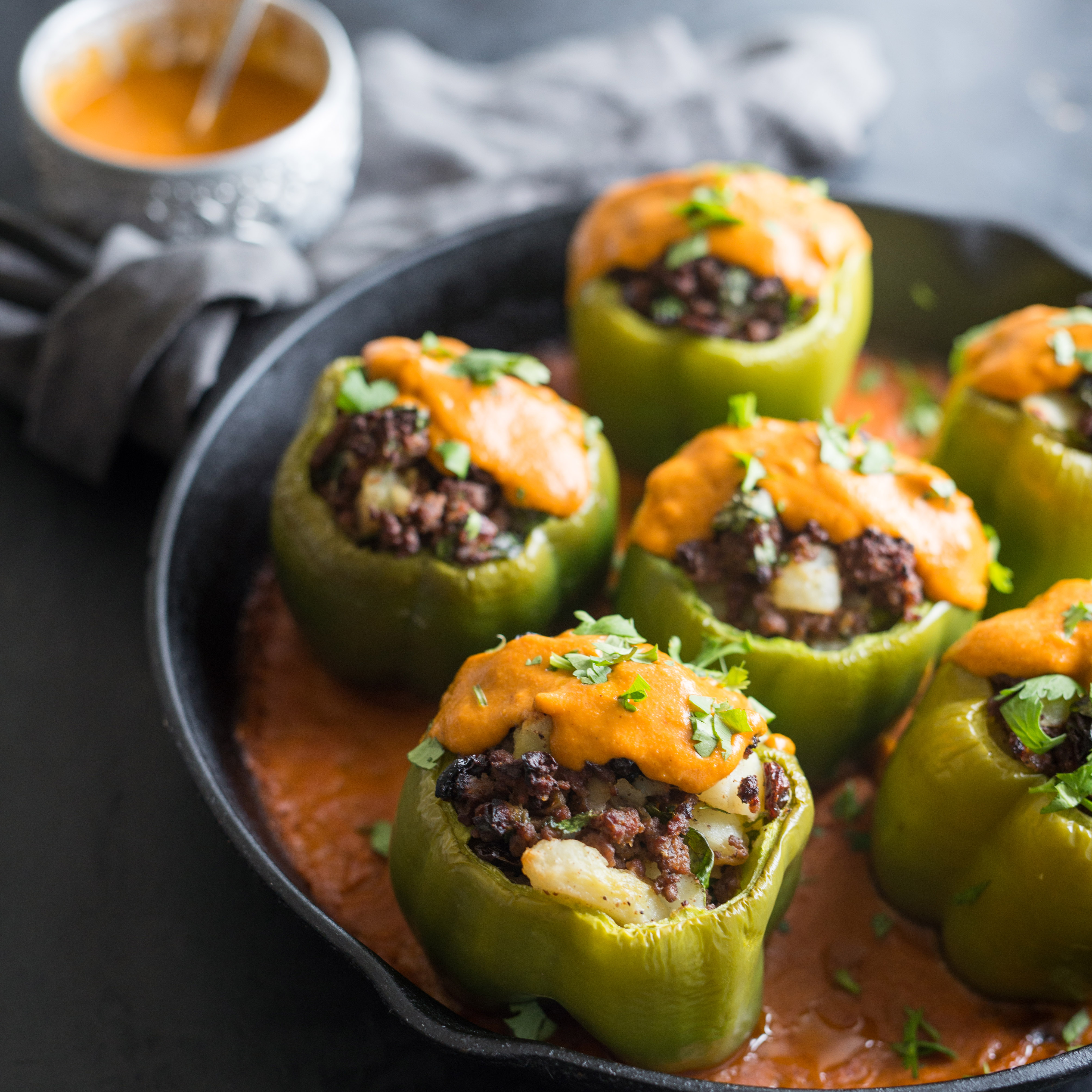
Armchair travel around the world!
Start your reading adventures with our FREE Reading Atlas.

- Around the World in 14 Books
- 7 Thrilling Book Series
- 6 Audiobooks That Are Like Theater For Your Ears



Food and drinks are some of the easiest ways — and the most fun— to vicariously experience another culture. When you add a great book to the mix, you've got the makings of a perfect evening. In Food+Fiction, we recommend a delicious read and a related recipe so you can try the taste of different destinations in your own kitchen.
This post is part of our Food+Fiction series.

In the 1920s, the Indian city of Bombay (now Mumbai) was under British rule. The second-largest city in the country, it was known as ‘the gateway to India.’ And it was the chief seaport, where modern cars, bejeweled elephants, ox-drawn carts, and people from all over the world mixed and mingled.
This vintage video from 1920 — produced by American James Anthony Fitzpatrick, a.k.a, ‘the voice of the globe’ — presents a very Western-centric view of this sparkling city. It’s romanticized and exoticized, the stuff of vintage Hollywood films and times gone by remembered through a filter that blurs the problematic edges of colonialism.
To understand more about the Indian experience of living under the British Raj — and have a really good time watching a heroine-with-moxie solve a murder mystery — why not spend some time with The Widows of Malabar Hill.
The novel’s intelligent, determined heroine was inspired by real-life lawyer Cornelia Sorabji, a woman of firsts: the first female grad of Bombay University, the first woman to study law at Oxford, the first woman to practice law in India.
The story is also rich with period detail about Zoroastrianism (the ancient Persian religion), women’s rights in early 20th century India, romantic courtship, the British imperial relationship to India, and family dynamics.
And food. Family meals and the act of eating together (or not) means something in real life and in this story. As Perveen observes so astutely when she has to deliver unwelcome news, ‘…a hungry person was more likely to be feisty, and if her father and grandfather ate well and had a few drinks with dinner, their reactions might be better.’

The roots of bell peppers reach back 9000 years to the tropical areas of South America, Central America, and Mexico. After his voyage of 1492, Christopher Columbus took peppers from the West Indies to Spain, where they were dubbed ‘Spanish Pepper’ and were grown in the royal gardens. They soon became popular in cuisine around the Mediterranean.
By the early 16th century, Portuguese traders traded bell peppers — as well as pineapple, papaya, cashews, and tomatoes — for Indian spices like cloves, nutmeg, and cinnamon.
One of the first recipes for stuffed peppers in the United States appeared in the 1896 Boston Cooking School Cook Book by Fannie Farmer. It was pretty simple: a whole pepper filled with steamed rice, cooked meat, stewed tomatoes, and butter. Another variation got creative with veal, bread crumbs, and onion juice (!).
But whither the spices?! For that, travel outside the US is required.
All around the world, other cuisines have taken their own approach to topping off a pepper with savory, spicy things. In Spain, it’s arborio rice and saffron. In Romania, pork, rice, and sour cream. In Korea, the peppers are stuffed with tofu, and in the Philippines, the filling includes shrimp, pork, and water chestnuts. In Denmark, the rice is replaced with bulgur wheat, and instead of meat, it’s mushrooms and kale (known as Fyldte Peberfrugter).
This Indian-inspired version marries ground lamb with fragrant spices and tender potatoes — topped with a tomato sauce that relaxes into a velvety texture with the addition of coconut milk and more earthy spices.
It can be tricky to cook the meat filling completely without baking the pepper into mushy oblivion. So to get the texture of the pepper just right, the peppers enjoy a light steam bath in the oven, and the meat and potatoes are pre-cooked on the stove. Then it’s fast and easy to put them together, yielding crisp-tender peppers, flavorful filling, and a rich sauce that’s like eating puffy curry clouds.

Serves 4-6. Total time 60-75 minutes. Hands-off time 30 minutes.
Peppers:
Potatoes:
Meat Filling:
Butter Sauce:
Prep. Preheat the oven to 375F. Pour 1 cup water into a 9×13-inch baking dish; set aside.
Prepare the peppers. Cut off the tops of the peppers and remove the seeds and membranes. Sprinkle the inside of the peppers with a little bit of salt. Place the peppers cut-side up in the prepared baking dish and cover tightly with aluminum foil. Bake for 10 minutes. Uncover and let them cool while you prepare the filling.
Cook the potatoes. Place the potatoes in a large pot, cover with water, add salt, then stir and bring to a boil. Simmer until the potatoes are tender, about 15-20 minutes. Meanwhile…
Make the filling. Heat the fat in a large nonstick skillet, 3 minutes. Add the onion, salt, cumin, chili powder, garam masala, and black pepper. Sauté until the onions are very tender and translucent, 7-10 minutes. Crumble the lamb into the pan and cook until no longer pink. Add the cilantro and raisins; stir to combine and remove from the heat. Drain the potatoes, add them to the pan with the lamb, and stir to combine, slightly mashing the potatoes. Set aside.
Make the sauce. In a large saucepan, warm the fat over medium-high heat, 2 minutes. Add the salt, cardamom, paprika, cumin, garam masala, and bay leaf; cook until fragrant, 30 seconds. Add the onion, garlic cloves, and almonds, stir, then cook until the onions are very soft and translucent, 7-10 minutes. Add the tomato purée and coconut milk to the pan; stir to combine. Bring to a boil, then simmer 5 minutes. Use a slotted spoon to remove the bay leaf, then use a stick blender to purée the sauce until it’s very smooth.
Finish the peppers. Use a spoon to stuff the peppers with filling and place them in the empty baking dish, standing up. Spoon a little sauce over each pepper, then pour the rest of the sauce into the pan around the peppers. Bake uncovered for 20-30 minutes, until the peppers are tender and the sauce is bubbly. Sprinkle with fresh cilantro and serve.
Note: The peppers can be stuffed and the sauce can be cooked up to one day ahead; store covered in the refrigerator. Add 10 minutes baking time if you’ve stored the uncooked peppers in the fridge. Leftovers can be stored in an airtight container in the fridge for up to 4 days. The leftovers taste great chopped up and mixed into a scramble with eggs for a fast breakfast (or brinner).
Perveen greeted her grandfather when he arrived in the hallway, asking him to reserve the letter for her father until after dinner. She knew that a hungry person was more likely to be feisty, and if her father and grandfather ate well and had a few drinks with dinner, their reactions might be better. — Sujata Massey
In any other time and place, men and women alike would laud our heroine Perveen Mistry for her intelligence, grit, mastery of languages, and analytical mind. But in 1921 Bombay, India, she’s an affront to propriety. She’s also a pariah at her law school, where she’s bullied every day by boys with half her brains and drive. After a stint at Oxford to earn her degree, she’s soon working on her first case at her father’s law firm: the last will and testament of a man with three wives, all of whom are listed as beneficiaries. When tensions in the household eventually lead to murder, Perveen is forced to overcome the terrors of her past and go beyond the gates — and betrayals — of the house on Malabar Hill to reveal the culprit. {more}
This murder mystery (400 pages) was published in January of 2018 by Soho Press. The book takes you to 1920s Bombay, India. Melissa read The Widows of Malabar Hill and loved it; it wouldn't be on our site if she didn't recommend it.
Bookshop.org is an online bookstore with a mission to financially support independent bookstores and give back to the book community.
Top image courtesy of Skreidzeleu/Shutterstock.
Want to keep up with our book-related adventures? Sign up for our newsletter!
Can you help us? If you like this article, share it your friends!
Strong Sense of Place is a website and podcast dedicated to literary travel and books we love. Reading good books increases empathy. Empathy is good for all of us and the amazing world we inhabit.
Strong Sense of Place is a listener-supported podcast. If you like the work we do, you can help make it happen by joining our Patreon! That'll unlock bonus content for you, too — including Mel's secret book reviews and Dave's behind-the-scenes notes for the latest Two Truths and a Lie.
Join our Substack to get our FREE newsletter with podcast updates and behind-the-scenes info — and join in fun chats about books and travel with other lovely readers.

We'll share enough detail to help you decide if a book is for you, but we'll never ruin plot twists or give away the ending.
Content on this site is ©2026 by Smudge Publishing, unless otherwise noted. Peace be with you, person who reads the small type.